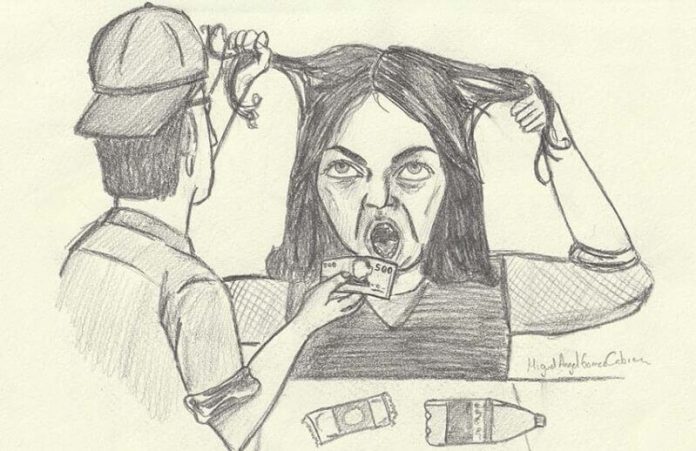Mexican money is, of course, the peso. It comes in different colors — blue, pink, yellow and a couple of others I can’t quite describe — so it’s visually interesting. But what’s even more interesting is the game that’s played with this money.
Cajeros (ATMs) in Mexico disgorge bills that are of large denomination, mainly 500-peso notes (US $25). If you withdraw, say, 3,000 pesos, you’ll almost certainly get six 500-peso notes.
It´s very frustrating when this happens because it’s nearly impossible to spend these, especially in smaller pueblos, although I’ve found it challenging in Mexico City as well. So I’ve learned that when I make a withdrawal, I make sure to tack 400 pesos on to the amount I actually want.
This means that if I need 3,000 pesos, I’ll withdraw 3,400, or if I need 6,500 pesos, I’ll take out 6,900; you get the idea.
That way, I’m sure to get at least two 200-peso notes, and if the stars are properly aligned, a 200 peso-note and two 100-peso notes. These I can spend. When I get two 100-peso notes, I feel like I’ve hit the lottery.
So it takes a little bit of planning when withdrawing money. Then it takes even more planning to spend it.
See, no business wants to change large bills. Forget trying to spend a 500-peso note in a small village. It’s going to be damn near impossible.
When I have nothing but large bills, I go to a big store — say, a supermarket like a Chedruai, Mega or La Comer — and buy a few things. But not a lot. Buying a lot and then paying with cash defeats the purpose. I need change, so I’ll keep my purchases to around 200 pesos.
I pay with a 500-peso note and grab some change. Or I’ll use the 500-peso note at a restaurant when I head into Mexico City and order a modest meal. I may get a dirty look from the waiter, but I always leave a big tip, so all is forgiven.
Even a 200-peso note can present a challenge. A pound of coffee at my local cafe costs 125 pesos (about US $6). If I hand them a 200-peso note, I know I’m in for a long wait while someone runs from store to store seeking to change the bill. I’ve learned to have exact change.
Still, despite the reluctance of store owners to take larger denominations, it’s critical to pay with the largest small bill possible. If something costs 30 pesos, sure, you could pay with the exact amount or with a 50-peso note, but later on, you’re going to find yourself without any smaller bills.
In that case, it’s best to pay with a 100-peso note because somewhere down the road, you’re going to need those small bills. But even paying with a 100-peso note may cause problems, something that has happened to me more than a few times.
A few years ago, I was in a store in Mexico City and was trying to pay for something that cost 25 or 30 pesos with a 100-peso note. The store owner looked at me aghast and said she had no change. I told her I was sorry but didn’t have anything smaller. She paused, looked at the bill, frowned and then counted out my change.
But it’s important to play fair. Don’t go into a small tienda (store) to buy a bag of snacks and try to pay with a 500-peso note. You’ll give the owner a coronary, and you won’t be welcome there again. Plus, you almost certainly won’t get your snacks.
If you do want to buy a bag of snacks and absolutely have to pay with, say, a 100-peso note, be nice. Apologize. Say, “I’m sorry, this is all I have.” Shrug, look a little forlorn, maybe buy a couple of pieces of candy. The owner will usually commiserate, reluctantly count out your change and maybe even let you in their store in the future.
Follow these basic suggestions and you’ll have plenty of change.
Now, I realize that I could withdraw money from a cajero and simply walk into a bank and ask them to change some 500-peso bills. But where’s the fun in that?
Joseph Sorrentino, a writer, photographer and author of the book San Gregorio Atlapulco: Cosmvisiones and of Stinky Island Tales: Some Stories from an Italian-American Childhood, is a regular contributor to Mexico News Daily. More examples of his photographs and links to other articles may be found at www.sorrentinophotography.com He currently lives in Chipilo, Puebla.
